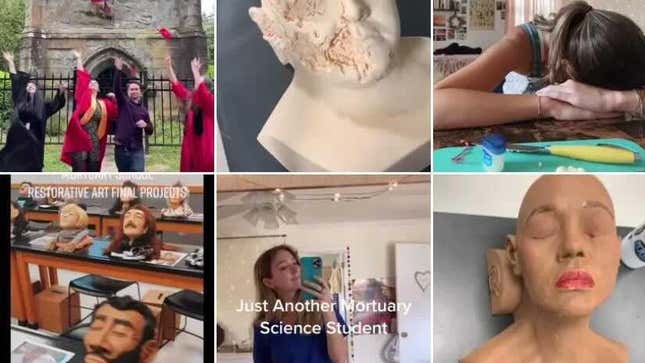How TikTok Morticians Bring Transparency to the Field
Creators want to illuminate an industry that may prefer to stay opaque to outsiders
Work

Like many TikTok addicts, my For You Page is a kaleidoscope of oddly specific obsessions. The beauty of the app is that it knows what you want to see before you even know you want to see it. On a given day, my feed is a mash-up of thrifting influencers, vegan chefs, and the occasional explanation about how to suture the wounds of a corpse. Yes, a corpse.
Meet mortuary TikTok, a group of funeral directors, embalmers, and mortuary school students who are working to change the perception of the field in the eyes of outsiders. Across the app, accounts like @hollisfuneralhome, @mortuaryschool101, and @mimithemortician bring awareness to a profession that may evoke scary associations. Some creators offer detailed backstories as to how exactly they became a funeral director, offering pathways to curious commenters who weren’t aware they could pursue such a career, and detailing the stress of exams. Others get into the nitty-gritty of the job, showcasing the inner workings of an embalming lab or facial reconstruction.
Many, if not most, of the creators are young women, which lines up with the demographics of recent mortuary school graduates; according to a 2018 Guardian report, female graduates in the funeral service sector increased 30 percent from 1996 to 2016. In 2017, almost 65 percent of funeral director program graduates were women. And while many members of mortuary TikTok seek to normalize death and grief, according to Ashley Tan’s report on the genre for i-D, some members say that the educational bent they bring to their TikToks serves a specific purpose: to illuminate an industry that may prefer to stay opaque to outsiders.
Jasmine Berrios, 22, who creates videos under the handle @jasmine_the_mortician, first came to the field after meeting an embalmer at a family party when she was a child. “He told me this one line that kind of stuck to me, and it was [that] the best that you can do [with] this one person you’re working on, think about the multitudes of people you’re helping because you help that one individual on the table,” she says.
-

-

-

-

-

-

-

-

-

-

-

-

-

-

-

-

-

-

-

-

-

-

-

-

-

-

-

-

-

-

-

-

-

-

-

-

-

-

-

-








































